Continuous Rotary Debarker
Fine tuned for your tree species and climate, in order to minimize white wood loss when removing the bark.
Fine tuned for your tree species and climate, in order to minimize white wood loss when removing the bark.

The whole log debarker is customized for capacity and bark levels for your mill the rotor diameter, the number of rotors, the rotor profile and rotor disc spacing are all considered when crafting your machine.
Take a look at this video demonstrating the Continuous Rotary Debarker processing logs in production on site at a mill. The logs are discharged from the debarker smooth and clean while retaining as much valuable fiber as possible.
View more Acrowood forest product processing equipment videos on our channel
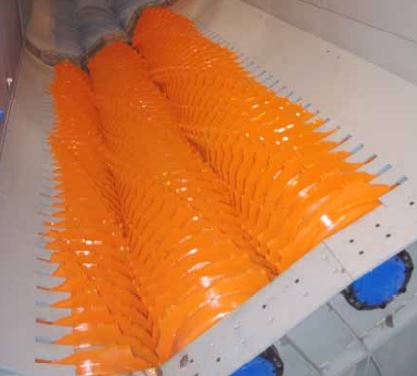
Application specific rotors with open/live bottom design.
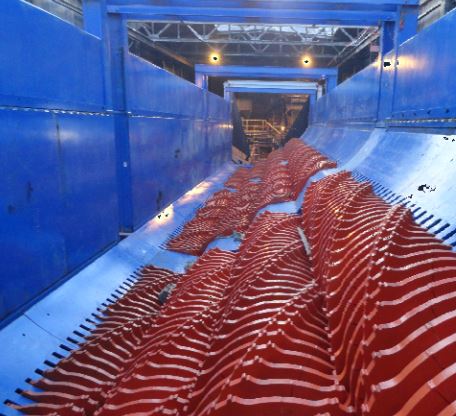
The live-bottom rotor design has no plates between rotors to restrict the removal and passage of bark. This results in maximum capacity for the foot-print required. Simple chuting below and a conveyor provide bark removal below the debarker.

Each debarker is sized and designed for the specific capacity and bark level requirements of the individual mill. The appropriate rotor diameter, the number of rotors, the rotor profile, and rotor disc spacing are all considered when sizing and designing a debarker, as are log species, diameter, and operating conditions.
Adjustable gate height to control dwell time and discharge of logs from the debarker

Acrowood and our predecessors, Sumner Iron Works and Black Clawson, have supplied debarkers for decades. A variety of mechanical debarker types have been supplied, along with the industry leading (at the time) Bellingham Hydraulic debarker.
Simple, robust drives use heavy duty roller chain and sprockets to drive individual rotors.
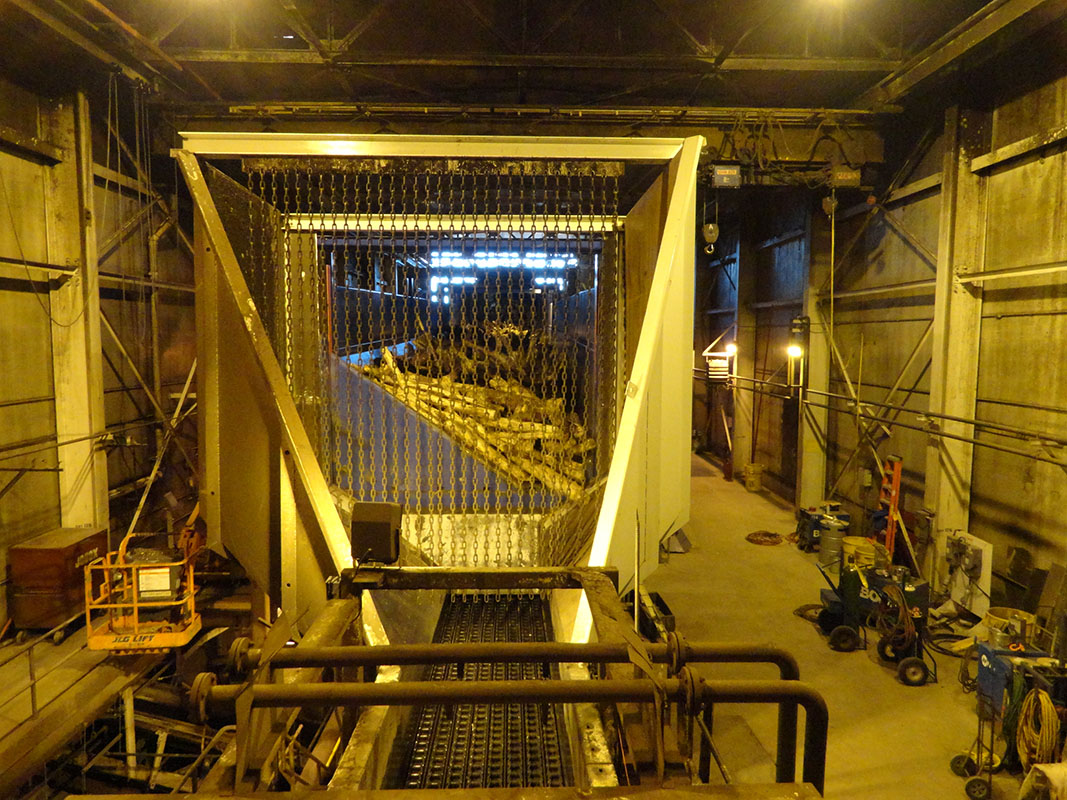
Rotary debarkers use a stationary bin and a variety of shaft-based rotating tooling. The method provides controlled agitation and abrasion of the logs or fibrous materials inside the bin. The tooling can be aggressive or passive, depending on the application.
Debarking occurs both due to the action of the tooling directly on the logs affecting the bark-to-wood bond and by the abrasion of log on log as they rotate and move inside the bin.
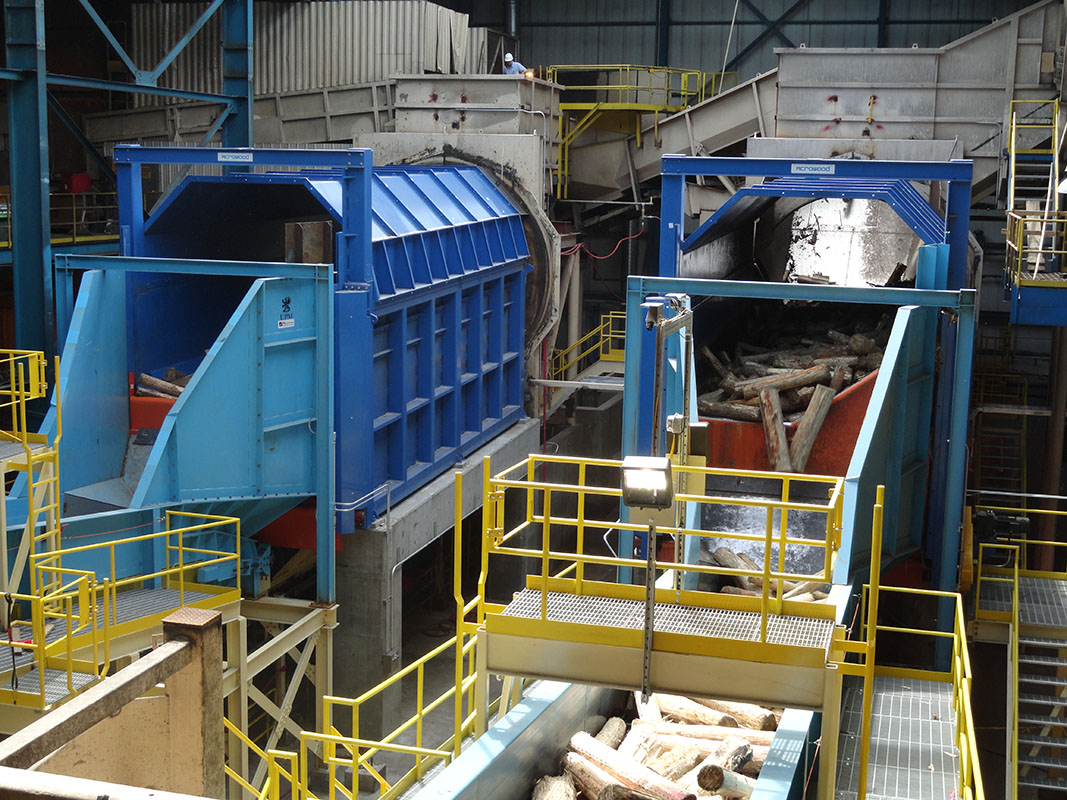
The rotary debarker process is dry, with no effluent treatment or water source required. Occasionally a minimal water spray to control dust is used. The process does not require de icing or thawing of frozen logs to effectively debark during winter months, resulting in savings in capital and related infrastructure. As well, a facility employing rotary debarking would see savings in over-all maintenance costs compared to a drum debarker and deicing deck combination.
Request the continuous rotary debarker machine brochure provided in PDF format for easy reading and printing.
Debarkers are the first machine in the pulping process that strips away the bark, sand and grit preparing them to be turned into acceptable sized wood chips by a whole log chipper.
Rotary debarking has fast become a preferred method for multiple stem continuous feed wood debarking and processing for forest industries.
Over a century of experience engineering equipment and machinery for pulp and paper, sawmill, panel board and biomass industries.

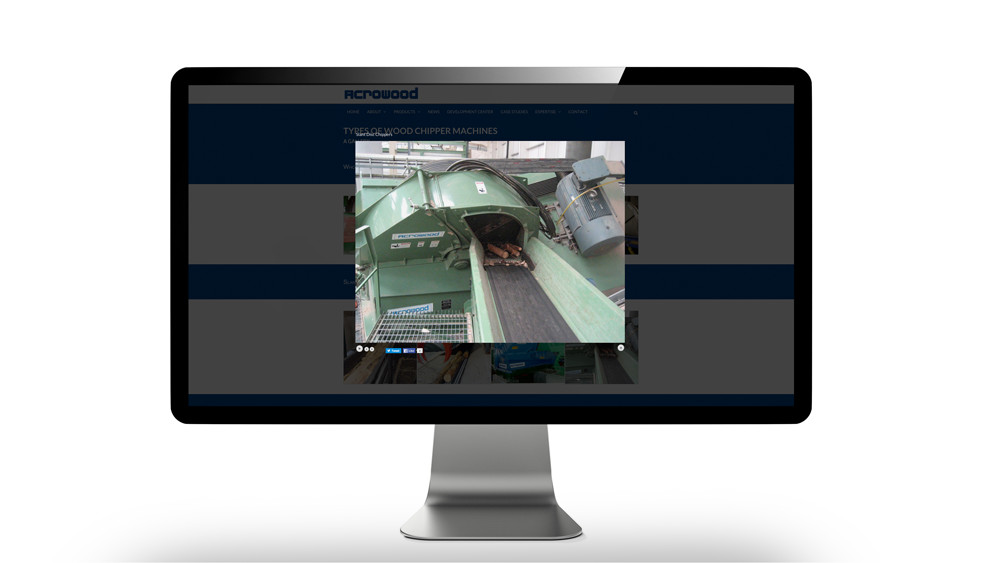
View the gallery of chipping, cracking and slicing machines, chip screening & material distribution machines, and rotary & batch debarker machines.
All of the company’s machines are specially engineered to save precious natural resources, giving customers a crucial edge – and creating a more sustainable solution.
The Continuous Rotary Debarker is only one component in Acrowood’s complete line of chip processing equipment.
Request a download of our complete wood chip processing product line brochure
A Look at Mechanisms, Performance, and Best Use Cases In the demanding
Meeting the Growing Demand for Engineered Wood Products The global demand for